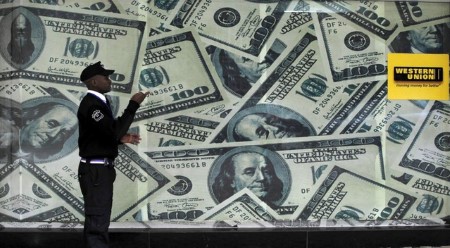




Quarterly Economic Growth Release: More BSP cuts to come
 DOWNLOAD
DOWNLOAD

Monthly Economic Update: Fed catches up
 DOWNLOAD
DOWNLOAD

Inflation Update: Steady and mellow
 DOWNLOAD
DOWNLOAD


Long-end US yields fall to start the new year

NEW YORK, Jan 3 (Reuters) – Longer-dated US Treasury yields fell on Tuesday, with the 10-year yield retreating after two straight weeks of gains to close out 2022 with its biggest annual gain in decades over concerns about the path of the Federal Reserve’s tightening policy.
The 10-year yield rose about 238 basis points in 2022, its biggest yearly climb since at least 1953, according to Refinitiv data, as the US central bank raised interest rates at its fastest pace since the 1980s to fight stubbornly high inflation after years of loose monetary policy.
The yield on 10-year Treasury notes was down 3.9 basis points at 3.792%.
After falling as low as 3.402% on Dec. 7, the 10-year yield rose to a high of 3.905 on Dec. 30 before dropping to 3.724% on Tuesday, its lowest in a week.
“There is also an element here of ‘did I miss it?’ playing out. We are seeing some more moderate economic data. We are seeing some signs of inflation, which we expected to moderate, are moderating,” said Robert Tipp, chief investment strategist and head of global bonds at PGIM Fixed Income in New York.
“After a big bear market and a big Fed rate hiking cycle there usually is a bull market, so there is a fear of ‘OK, we are coming into the new year – did I miss the peak in interest rates last year?’ That could be creating some anxiety to buy the market here.”
Tipp also noted some technical pressure in the form of monthly rebalancing that was pushed into this year.
Investors will get a look at several pieces of data on the labor market this week, culminating in the employment report on Friday. A weakening labor market is seen as one of the key pieces needed to convince the Fed to begin slowing its monetary tightening path.
Economic data on Tuesday showed construction spending rebounded unexpectedly in November thanks to gains in nonresidential structures, but higher mortgage rates continue to weigh on single-family homebuilding.
The 30-year Treasury bond yield fell 4.8 basis points to 3.890%.
The US central bank expects the fed funds rate to climb above 5% this year. Fed Chair Jay Powell and other Fed officials have said rates may need to be kept high longer to tackle inflation. That represents a higher level than the market is anticipating, with a high of about 4.95% by mid-year according to fed funds futures.
A closely watched part of the US Treasury yield curve measuring the gap between yields on two- and 10-year Treasury notes, seen as an indicator of economic expectations, was at a negative 61.3 basis points. Such an inversion is seen by many as a signal of recession.
The two-year US Treasury yield, which typically moves in step with interest rate expectations, was unchanged at 4.403%.
The breakeven rate on five-year US Treasury Inflation-Protected Securities (TIPS) was last at 2.314%, after closing at 2.382% on Friday.
The 10-year TIPS breakeven rate was last at 2.258%, indicating the market sees inflation averaging 2.3% a year for the next decade.
(Reporting by Chuck Mikolajczak; Editing by Andrea Ricci and Richard Chang)
This article originally appeared on reuters.com





 By Reuters
By Reuters